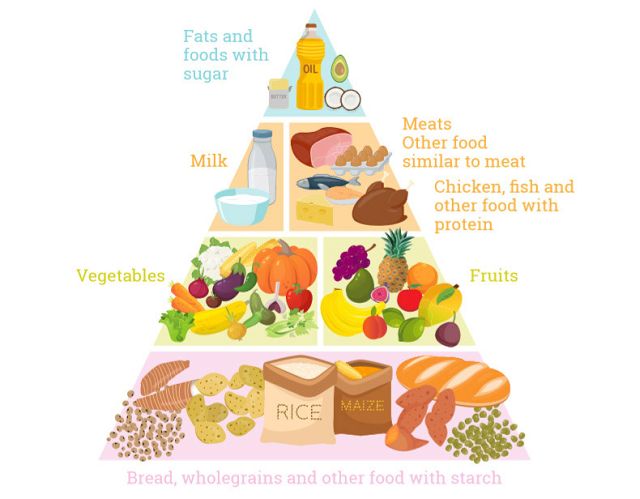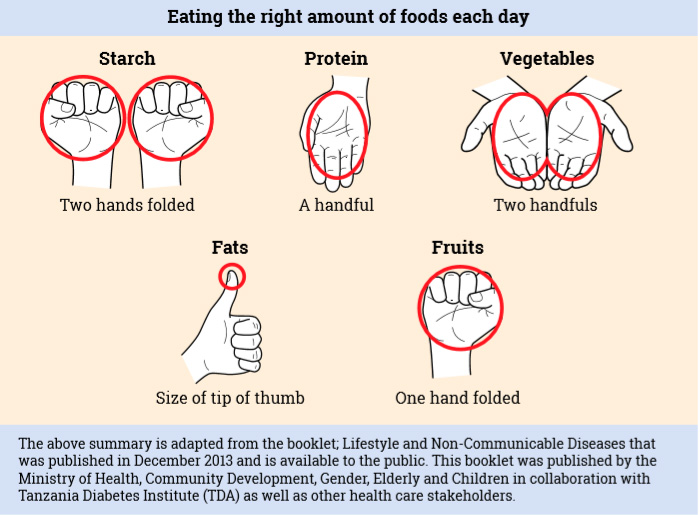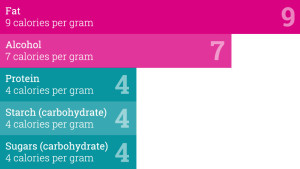DIETARY GUIDANCE
Eating Well
A balanced diet can help protect us against noncommunicable diseases (NCDs) such as heart disease, stroke, diabetes, cancer and obesity as well as malnutrition.
There are a number of factors which can influence diet including social and economic factors (1). For example, food prices which affect availability and affordability, individual preferences and beliefs, cultural traditions, and geographical and environmental aspects (including climate change).
Whilst this is complex issue, there is advice which is applicable no matter what your diet and lifestyle and in Tanzania, this is provided by the Ministry of Health, Community Development, Gender, Elderly and Children.
Healthy eating across the world is about consuming the right amount of food for your energy needs and the right balance of foods to make sure your body gets all the nutrients it needs.
Recommended Nutritional Diet Triangle
Tanzania’s Ministry of Health, Community Development, Gender, Elderly and Children provides guidance to help Tanzanians follow a balanced diet as part of its wider education booklet “Mtindo wa Maisha na Magonjwa Yasiyo ya Kuambukiza. Dalili, Athari na Kinga. Elimu kwa Jamii (37)” (Lifestyle and Non-communicable Diseases. Symptoms, Effects and Prevention. Education to the Community).
This is in the form of an easy to follow pyramid diagram which sets out the amount of food to eat from various food groups in order to get the required nutrients for the body. As per the booklet, it is advised that the amount and food group intake per meal should be similar to the amount indicated in the pyramid. Remember that some of the nutrients such as vitamins are not stored in the body hence must be obtained from your daily nutrition.
RECOMMENDED NUTRITIONAL DIET TABLE


To read more, please visit:
http://hssrc.tamisemi.go.tz/storage/app/uploads/public/5cf/a3d/8cd/5cfa3d8cd261b544310595.pdf
TIPS FOR A HEALTHY BALANCED DIET
The World Health Organization advises that eating a variety of foods and consuming less salt, sugars and saturated and industrially-produced trans-fats, are essential for a healthy diet. It also sets out that a healthy diet consists of a combination of different foods (1) including:
-
Staples like cereals (wheat, barley, rye, maize or rice) or starchy tubers or roots (potato, yam, taro or cassava)
-
Legumes (lentils and beans)
-
Fruit and vegetables
-
Foods from animal sources (meat, fish, eggs and milk)
| SUGAR FACTS |
|---|
| White and brown sugars are both made from sugar cane or sugar beet (although sugar beet is not grown in Tanzania - it is grown in more temperate parts of the world). Brown sugar made from sugar cane contains various amounts of molasses depending on the type of sugar produced – the darker brown the sugar, the higher the amount of molasses – which provides the characteristic flavour and texture. White sugar is made by removing all traces of molasses from the sugar. |



